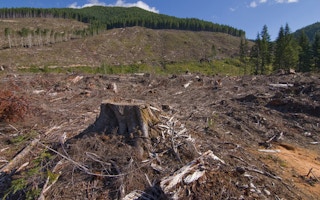The world’s undisturbed forests are being degraded at an “alarming speed”, researchers said on Thursday, as they released new analysis showing an area three times the size of Germany was affected by logging and infrastructure development in the last 13 years.
Using satellite technology and advanced techniques, they found that more than 104 million hectares of intact forest landscapes were degraded between 2000 and 2013 - around 8 per cent of the global total.
“We can clearly see that business as usual will lead to destruction of most remaining intact forests this century,” said Nigel Sizer, global director of the forest programme at the World Resources Institute (WRI) and head of Global Forest Watch.
The new maps showing the location and extent of the world’s intact forest landscapes are accessible on the Global Forest Watch platform, an online forest monitoring and alert system launched in February.
The worst damage was done in the Northern boreal forest belt of Canada, Russia and Alaska, accounting for almost half the degraded land, while 25 percent of the degraded area was found in the Amazon rainforest and 9 per cent in the Congo Basin.
Christoph Thies, senior forest campaigner for Greenpeace International, one of the organisations involved in the project, urged governments to take “urgent action” to stop the degradation of intact forests, such as creating more protected areas and strengthening the rights of forest communities.
Developing countries should receive more international support to help them protect their pristine forests, while private-sector initiatives like the Forest Stewardship Council and roundtables on palm oil, soy and beef should ensure their standards for timber and agricultural commodities avoid degradation of forest wildernesses, Thies added.
Climate change
Intact forest landscapes are defined as areas that retain native biodiversity and contain no signs of fragmentation by logging and infrastructure such as roads, mining and oil or gas development.
According to the analysis, three countries – Canada, Russia and Brazil – contain 65 per cent of the world’s remaining intact forests, and accounted for over half of all the degradation. Road building, often linked to logging and extractive industries, was the key driver, the researchers said. Other reasons range from human-caused fires in Russia to agricultural conversion in Brazil.
The damage to pristine forest landscapes from human activity not only leads to increased biodiversity loss, but also intensifies climate change through greenhouse gas emissions and loss of valuable forest carbon stores and sinks, said the project partners - Greenpeace GIS Laboratory, the University of Maryland, Transparent World, WRI and WWF-Russia.
The new data could help companies that have made sustainability commitments work out which areas to avoid when sourcing commodities like timber, palm oil, beef and soy.
“This is highly significant as market-led efforts gain further support amid continued lax governance and enforcement in many frontier forest regions,” the groups said in a statement.

















